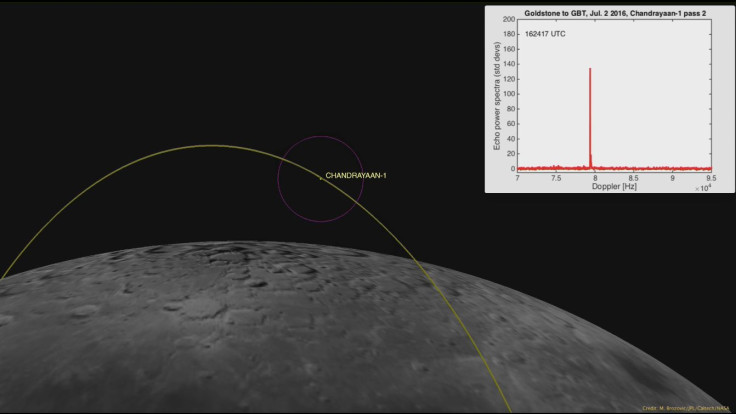India's Chandrayaan-2 Enters Lunar Orbit One Month After Launch

Chandrayaan-2, an unmanned Indian spacecraft that was launched last month, entered the moon’s orbit Tuesday, completing a tricky maneuver on its mission to land on the moon.
The spacecraft, whose name translates to “moon craft” entered the lunar orbit nearly a month after it was launched. It will continue to orbit the moon, till it reaches a distance of 62 miles (100 kms) from the moon’s surface before heading to land on the south lunar pole to study about the water deposits that were discovered earlier over there.
#ISRO
— ISRO (@isro) August 20, 2019
Today (August 20, 2019) after the Lunar Orbit Insertion (LOI), #Chandrayaan2 is now in Lunar orbit. Lander Vikram will soft land on Moon on September 7, 2019 pic.twitter.com/6mS84pP6RD
The Indian Space Research Organisation (ISRO) said in a statement that the spacecraft completed its “Linar Orbit Insertion” (LOI) Tuesday as planned. The LOI was a tricky maneuver to pull off, considering the fact that the satellite would have gone off the set path and got lost in deep space if it had not approached the Moon at the right velocity.
“[The LOI] was completed successfully today at 0902 hrs IST (0332 GMT) as planned, using the onboard propulsion system. The duration of manoeuvre was 1,738 seconds," the statement released by ISRO said.
The $140 million mission, which is headed by two female scientists, plans to land the probe on the lunar surface on Sept. 7. If successful India will become the fourth country after the United States, Russia and China to achieve this historic feat.
The lander will use rocket fuel for braking after it has separated from the orbiter, eventually landing on the south lunar pole where no landings have been attempted before. A rover will then be deployed to study the permanently shadowed moon craters that contain water deposits, as previously confirmed by the Chandrayaan-1 mission in 2008.
“The globe is waiting for our data. We are going to land at a place for the first time on the south pole and NASA has already announced the project of having a human habitat type of thing on the south pole. So this will be giving input on a program which is concerning humanity in a major way,” ISRO Chairman D.K. Sivan said in a news conference.
Sivan added that NASA’s 2024 manned mission to the moon, Artemis, would use the data collected by Chandrayaan-2.
© Copyright IBTimes 2024. All rights reserved.





















